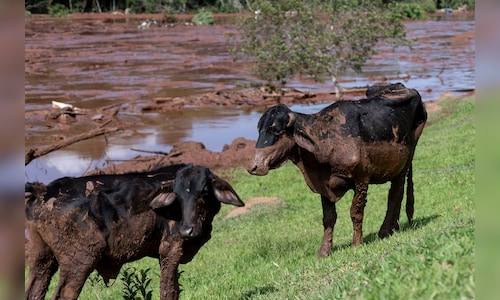
The vaccine’s quality, safety, and efficacy have been rigorously tested at both ICAR-NRCE and the Indian Veterinary Research Institute (IVRI), meeting the highest global standards. Developed from the LSD virus/Ranchi/2019 vaccine strain by the Indian Council of Agricultural Research-National Research Centre on Equines (ICAR-NRCE), Hisar, and in collaboration with Biovet, the vaccine is expected to play a crucial role in India’s self-reliance in veterinary healthcare.
A groundbreaking development
Dr Krishna Ella, Founder of Biovet, remarked, “This DIVA marker vaccine is a game-changer for veterinary medicine, aiding in disease surveillance and eradication programs. Epidemiologists and field workers can now distinguish between vaccinated animals and those previously infected with LSD.”
He further emphasised that the CDSCO approval marks a significant step toward India’s self-reliance (Atmanirbhar Bharat) in veterinary healthcare, reducing dependency on imported vaccines. As India works towards a disease-free livestock population, this vaccine will be pivotal in ensuring the sustainability of the dairy industry.
Over the past two years, Lumpy Skin Disease has caused significant losses in India, with approximately 200,000 cattle dying and millions more losing their milk production capacity. The introduction of Biolumpivaxin is expected to have a far-reaching impact, with Biovet’s Mallur facility capable of producing up to 500 million doses annually.
Key attributes of Biolumpivaxin
Biolumpivaxin is available in freeze-dried form, with stabilising agents for long-term stability. The diluent for reconstitution is provided separately. Each dose contains NLT log10 3.5 /mL, and the vaccine is administered once a year to cattle and buffaloes over three months of age. It is available in multi-dose vials containing between 25 and 100 doses, and the vaccine remains stable at a storage temperature of 2-8°C. The recommended dose is 1.0 mL, to be administered via subcutaneous injection.
Pre-clinical and clinical trials
Pre-clinical studies indicate that Biolumpivaxin is free from extraneous agents and has demonstrated safety, immunogenicity, and protective efficacy in controlled BSL3 animal facilities. The vaccine virus did not revert to virulence during testing and was not detected in milk, semen, or other bodily excretions, such as nasal, ocular, or fecal secretions from vaccinated animals.
In clinical trials, the vaccine was tested on thousands of cattle and buffaloes under field conditions by ICAR-NRCE and Biovet. It was found to be safe and effective across all animal groups, including pregnant and lactating cattle and buffaloes, as well as breeding bulls. Importantly, the vaccine did not cause any adverse reactions, such as those associated with the Neethling LSDV strain used in other vaccines, which can lead to local reactions, fever, or temporary milk yield reductions—a phenomenon known as the “Neethling effect.”
The DIVA marker concept allows post-vaccination seromonitoring to differentiate infected animals from vaccinated ones, supporting effective LSD control programs.
What is lumpy skin disease (LSD)?
Lumpy skin disease is a transboundary animal disease that has significantly impacted India’s cattle health and dairy industry. It is characterised by skin nodules, fever, swollen lymph nodes, decreased milk yield, and difficulty moving. The LSD virus is primarily transmitted through vector bites from mosquitoes, ticks, and other biting insects.
During the 2022 LSD outbreak in India, morbidity rates reached as high as 80%, with case fatality rates up to 67% in states such as Gujarat, Rajasthan, Maharashtra, Uttar Pradesh, Punjab, and Jammu and Kashmir. This led to an estimated economic loss of over ₹18,337.76 crores and a 26% decline in milk production, severely affecting the dairy industry and rural economy. Since its first confirmed outbreak in India in 2019, the LSD virus has spread rapidly across the country, threatening the livelihoods of millions of small-scale farmers.
Vaccination: The key to control
Vaccination has proven to be the most effective method of controlling the LSD virus, particularly with homologous vaccines. The vaccine triggers the immune system to defend against LSD virus infection, with immunity typically developing within 3 to 4 weeks after vaccination. Biovet emphasises that advance vaccination is critical as a preventive measure to protect dairy cattle and buffaloes of all ages from LSD infection.



